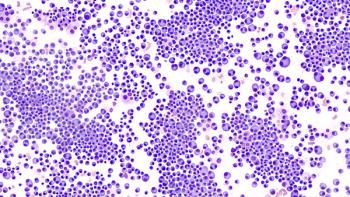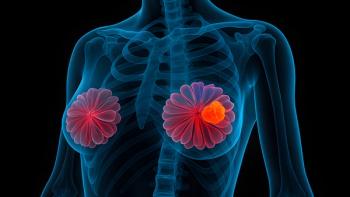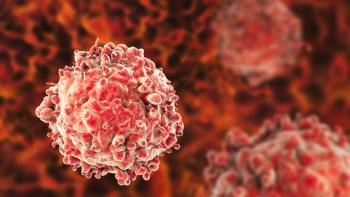
Collaboration Between Pediatric Oncology Nurses and Social Workers Decreases Treatment-Related Distress

Pediatric oncology nurses and social workers routinely collaborate not only in the biopsychosocial assessment of families’ psychosocial needs and distress, but in developing interventions that can improve a patient’s and family’s quality of life while in pediatric cancer treatment and in survivorship.
In 1984, Barry B. Pomerantz wrote in Health and Social Work that a benefit of planned collaborative interviewing by social workers and nursing staff was the “early identification of psychosocial problems in patients and families seeking medical treatment." He espoused the use of the bio-psychosocial model and the increased communication between families and medical providers when using a multi-disciplinary, family centered model of care for pediatric patients.1-3
Since then, multidisciplinary care has become the standard of practice in pediatric oncology. Pediatric oncology nurses and social workers routinely collaborate not only in the biopsychosocial assessment of families’ psychosocial needs and distress, but in developing interventions that can improve a patient’s and family’s quality of life while in pediatric cancer treatment and in survivorship.
Moreover, pediatric oncology nurses and social workers can play a pivotal role in facilitating treatment adherence. Adherence can be impacted by a variety of factors including depression and anxiety, avoidance of side effects, financial barriers, and cultural/religious beliefs. In assessing and addressing lack of adherence, nurses and social workers share common skills in addition to those unique to their training. Nurses bring to the assessment an awareness of physiological and chemotherapy related factors that can lead to non-adherence.
Social workers can assess social, emotional, and financial barriers that disrupt participation in treatment. Nurses are skilled at symptom management and oncology education, while social workers can access resources to decrease financial barriers to costly medications, facilitate communication between providers, and ameliorate distress reactions to treatment through evidence-based counseling such as mind body strategies, cognitive behavioral interventions, and family/caregiver counseling.
Case Study
The case of AK illustrates how pediatric oncology nurses and social workers can successfully collaborate to resolve adherence issues and conditioned aversion for a child in treatment.
AK was a 10-year-old girl diagnosed with a brain tumor treated once weekly with IV chemotherapy. As treatment progressed, a child life specialist noted that in all settings, (clinic, ED, and inpatient), AK had grown increasingly resistant to port access. The child’s mother complained that AK was refusing to get in the car for treatment appointments. A treatment nurse reported that AK now merely had to look at a treatment nurse to develop nausea, and a child life specialist noted that prior coping strategies of distraction were no longer effective in facilitating AK’s compliance with port access.
A social worker spoke with the mother and discovered that the parents were not administering antinausea medication after AK’s chemotherapy on Fridays because they were concerned about the sedating effects. The family’s culture also emphasized using mind-body strategies to manage physical discomfort. However, for AK, the sole use of relaxation techniques was not sufficient to manage her side effects. She frequently spent the weekend experiencing severe nausea and vomiting.
The social worker informed the advanced practice nurse (APN), treatment nurse, and child life specialist of the parents’ concerns surrounding the sedating effects of anti-nausea medication and the resulting severe distress AK was experiencing after every chemotherapy treatment. AK presented with behaviors indicative of a conditioned aversion in which exposure to stimuli associated with treatment became a sufficient to trigger nausea/emesis. A tentative plan was developed to provide symptom management treatment education for the parents, and a cognitive behavioral intervention (CBI) with AK and her mother. The plan included the involvement of an APN, a treatment nurse, a social worker and a child life specialist.
The social worker met with AK’s mother to explain the relationship between weekly side effects and AK’s adverse reactions to treatment. The social worker introduced the components of CBI that could be useful in improving AK’s treatment related distress. AK’s mother felt this was worth trying as it kept in line with the family’s cultural beliefs on the use of mind/body methods to manage some physical ills.
AK’s parents were open to discussing alternate anti-nausea medications. With the parent’s approval, the intervention plan was executed. The APN reviewed medication options for controlling AK’s nausea that reduced potential of sedating side effects along and provided education to address the parents’ misconceptions about AK receiving too much medication. The social worker explained components of CBI to AK and her mother while emphasizing the mother’s role as a coach for AK.
AK’s affirmations and scripts were songs and poems she chose or generated herself. The child life specialist helped AK choose distraction that was her favorite funniest song video. Treatment nurse participated in all of the planning and was active participant in providing encouragement to AK. To initially shift visual attention from treatment nurse until AK was less distressed, both social worker and child life specialist were in the treatment room during port access. The social worker supported the mother in coaching AK while the child life specialist reinforced AK’s effective prior use of distraction. As the mother was AK’s primary caretaker, her collaboration with AK was key to promote generalization of coping strategies to other medical settings.
Over the course of 8 weeks, both AK and her mother became more confident and able to work together to reduce AK’s distress. AK and her mother reported decreased nausea and avoidant behaviors. The social worker and child life specialist gradually weaned their presence and let the treatment nurse take a more prominent role in supporting AK during port access until only the treatment nurse, AK, and mother were present during the procedure. After that, the social worker and child life specialist only did periodic reinforcement of coping skills.
The collaboration of a multidisciplinary team comprised of pediatric oncology nurses, social worker and child life specialist in AK’s case demonstrated how their shared and profession specific skills could provide comprehensive assessment and developmentally appropriate, culturally aware, family centered care to decrease treatment related distress and improve treatment adherence.
References
- Association of Pediatric Oncology Social Workers. Pediatric Oncology Social Work. Accessed May 20, 2022.
https://bit.ly/3cqOfla - Pomerantz B. Collaborative Interviewing:A Family Centered Approach to Pediatric Care. Health and Social Work. 1984;9(1):66-73.
https://bit.ly/3yJnsIg - Sivesind D, Paire S. Coping with Cancer: Patient and Family Issues. In Burke, C (Ed.), Psychosocial Dimensions of Oncology Nursing Care. 2009;2:1-28. Oncology Nursing
Newsletter
Knowledge is power. Don’t miss the most recent breakthroughs in cancer care.
















































































